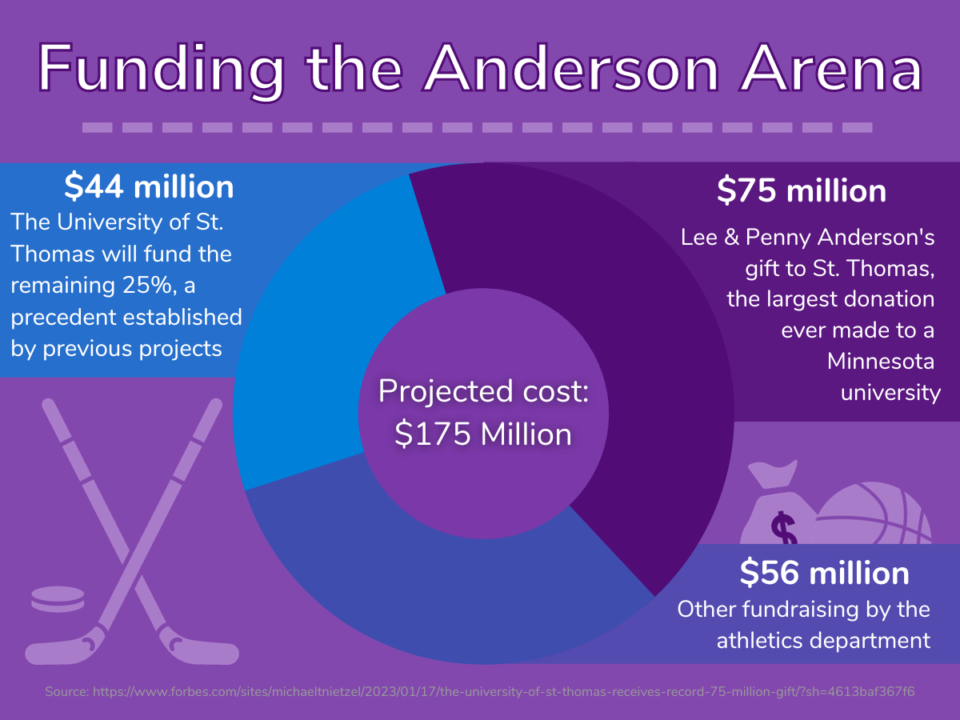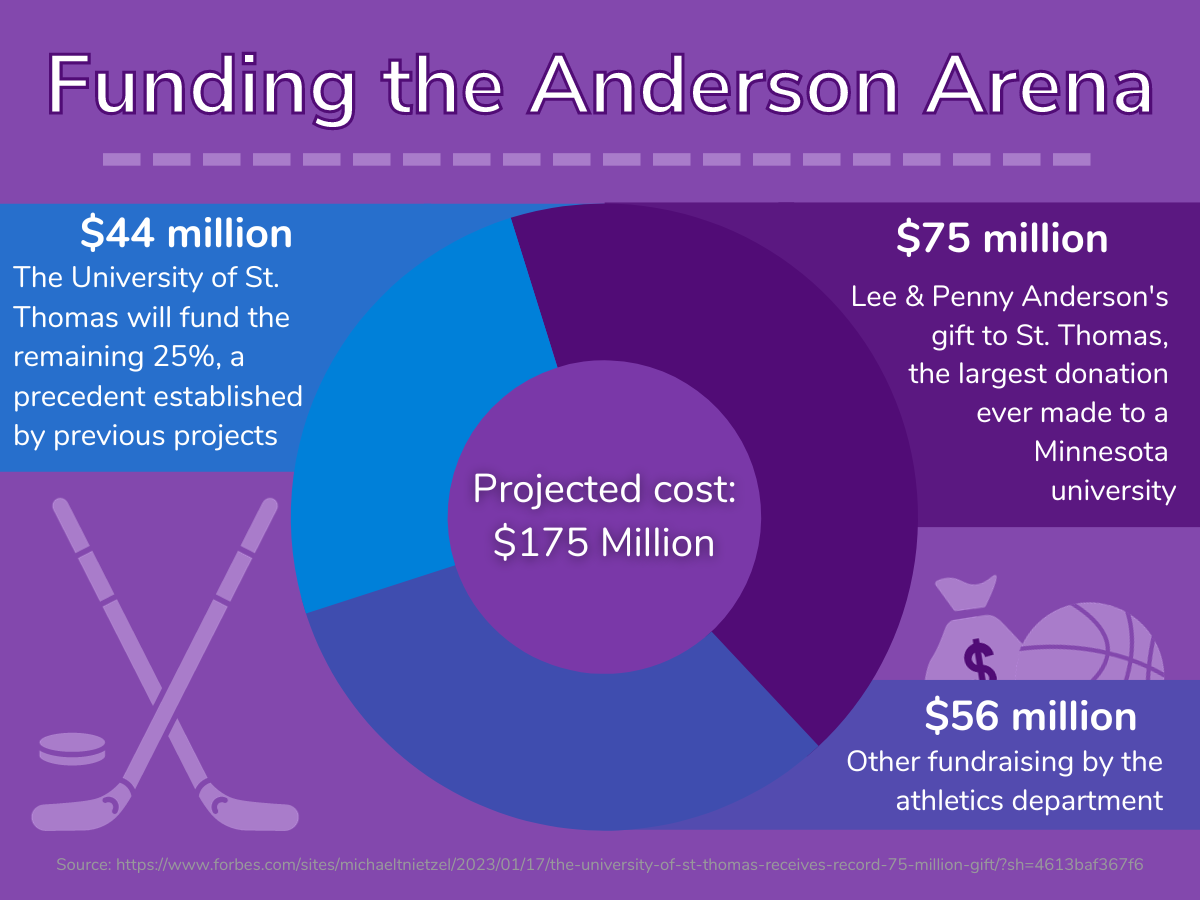
Fundraising for the Lee and Penny Anderson Arena is “nearing the finish line” to reach its $131 million goal by the beginning of November, according to Senior Associate Athletics Director Ben Fraser.
The University of St. Thomas announced the arena — intended for use by the men’s and women’s basketball and hockey teams — in January alongside a $75 million donation from the Andersons. The gift broke records as the largest single donation in St. Thomas’ history and the largest single philanthropic gift to a university in Minnesota. The St. Thomas Newsroom announced an additional $12 million raised for the project in March, sourced from anonymous donors.
This brought fundraising to a total of $87 million. While overall costs are estimated to be $175 million, Fraser says that the university has a policy to philanthropically fundraise 75% of the total while the school covers the remaining 25%. Fraser says that the university is “much past” where it was in the spring and is currently in conversations with potential donors to reach its target.
“I think our donor support speaks volumes,” Fraser said, “Our donors are engaged, and I think that says a lot about the school.”
Even before the announcement of the arena, Fraser says that St. Thomas leaned on donors “very heavily” to finance the cost of transitioning from Division III to Division I. According to data from the Equity in Athletics Disclosure Act, the athletics department raised $11.8 million of the roughly $17 million it spent on athletics in 2021-22, while the remaining $5.9 million came from donors and other outside sources.
The Anderson Arena is not the only athletic project currently underway; in April of last year, the university announced that it was in the planning stages for a new baseball and softball stadium to be built in Highland Park.
Focus on the new Highland and Anderson facilities came after Town & Country Club rejected the university’s $61.4 million offer to purchase its 94-acre golf course for university development in February of last year, according to Mark Vangsgard, vice president for business affairs and chief financial officer at St. Thomas.
Vangsgard says that the deal was “strategically important” to the university both athletically and academically. It would have allowed for potential expansion that would have included the planned hockey and baseball stadiums in addition to other future developments.
“If you just say you’re a small, private liberal arts school that has small class sizes and dedicated faculty, you’ve just described 600 schools throughout the U.S.,” Vangsgard said, “You want to be differentiated; you want to be visible; you want to have a strong perception.”
But this differentiation has come with a price tag. The $17 million in spending reported in the university’s EADA report for 2021-22 was over triple the cost of typical operating expenses when St. Thomas was in Division III. However, Fraser says that the university has found its “groove” after three years in Division I, with steadily increasing donor support from the Tommie Athletic Fund, which hit 1,000 donors for the first time last year.
Vangsgard estimates that the $300 athletic fee charged to undergraduate students — a new addition in 2022 that generates an additional $1.25 million, according to Twin Cities Business — will not increase any more than the rate of tuition increases.
The new arena will also generate revenue through use for commencements, concerts and rentals of the arena’s second sheet of ice. Much of the money from these rentals will go towards covering the costs of maintaining the new complex, according to Fraser.
The arena will also be able to seat more fans than the basketball and hockey teams’ current home stadiums, Schoenecker Arena and St. Thomas Academy, respectively.
“(The Xcel Energy Center) game definitely generates revenue for athletics, but equally as important it offers an opportunity to showcase our hockey programs in front of far more than we can accommodate at Saint Thomas Academy,” Vice President and Director of Athletics Phil Esten wrote in an email about the hockey games against the University of Minnesota on Oct. 13. “We are always looking for opportunities to accomplish both priorities for us: generate revenue and extend our brand.”
Fraser says that other examples like the nearly 1,000 St. Thomas fans who were present for the football team’s away game at Harvard on Sept. 16 further demonstrate the athletics department’s progress in developing a dedicated Division I following.
“We had a lot of incredible people jump on right away, but we also have a lot of people who were waiting to see how this transition went, and I think the first two years have proved that we can be competitive in a lot of different ways,” Fraser said. “I think you’ll see a lot of people jump on board and get excited about the arena, and that continued growth will bring more and more people in.”
Kevin Lynch can be reached at lync1832@stthomas.edu.

